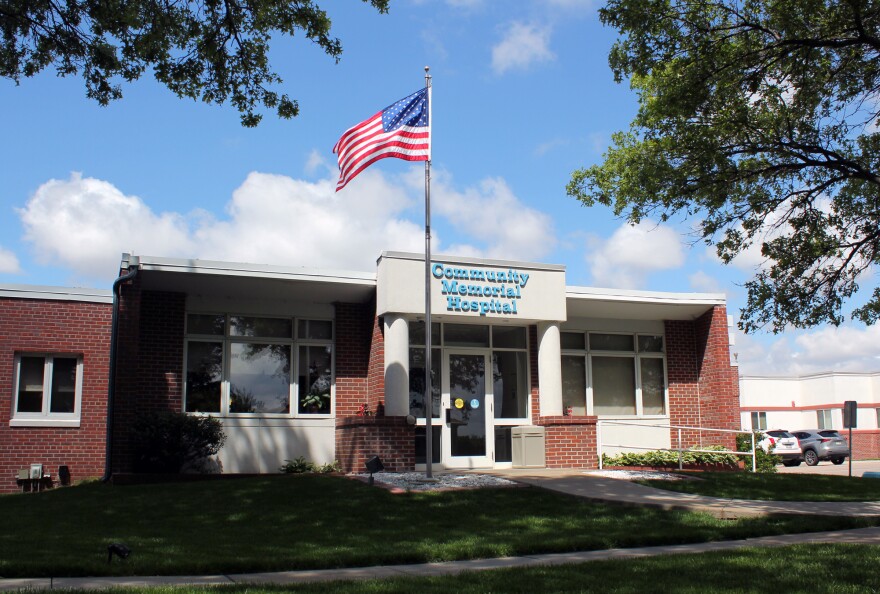President Donald Trump spent the campaign pledging to revive rural communities, where many voters have felt ignored by previous administrations. But after announcing staffing changes and budget plans that would make cuts to programs aimed at rural areas, critics are questioning whether the White House remains committed to that goal.
The U.S. Department of Agriculture administers billions of dollars’ worth of programs to support farmers and ranchers, but it also works on growing the broader rural economy through its Office of Rural Development. As part of an agency-wide reorganization, Agriculture Secretary Sonny Perdue says he plans to eliminate the USDA’s undersecretary for rural development. Instead, an assistant that reports to him would run rural development efforts. Just a few weeks into his tenure, the plan amounts to a significant shakeup in USDA’s rural development mission area.
Perdue, however, told the House Agriculture Committee he considers it a promotion.
“That person is going to be sitting close to me with walk-in privileges (and can say) ‘This is a great opportunity, this is a deal, what do you think about, how can we do better?’” Perdue says. “The mission is not going to diminish whatsoever.”
While the person in charge of rural development will be close to the ag secretary, critics are concerned that person will be more distant from other decision-making.

“It is very clearly a demotion for rural development,” says Ferd Hoefner of the National Sustainable Agriculture Coalition.
Hoefner says the undersecretaries at USDA are like the president’s Cabinet. When big decisions are made on policy or the budget, undersecretaries are in the room. Assistants typically are not, he says.
“Food safety will be there and farm programs will be there and all the other undersecretaries will be there, and rural development won’t have a spot,” Hoefner says.
Rural development programs provide funding to finance businesses, update utilities and build infrastructure. Hoefner worries that without an undersecretary Washington will pay less attention to small towns that depend on government support.
That includes cities like Syracuse in southeast Nebraska, which has a population of about 2,000. Community Memorial Hospital in Syracuse was built in 1952. The Emergency Room is too small, says hospital CEO Michael Harvey, and the hospital design does not fit the walk-in, walk-out procedures of modern health care.
“Ninety percent of what we do is on an outpatient basis,” Harvey says. “Our current facility was not designed for that.”
Now, a new hospital is under construction. The new site is away from the old building, on the edge of town at the busy intersection of Highway 2 and Highway 50. Construction crews are ready to build across from a truck stop and next to a tractor dealership.
By October 2018, if all goes to plan, there will be a state-of-the-art hospital here with a bigger Emergency Room and a bigger operating room. Small rural hospitals have to keep up if they want to stay open, Harvey says, but many cannot afford to finance major updates without help from the federal government.
“We were able to get a $25 million loan for the facility with a 40-year term and a very low interest rate,” Harvey says.

Commercial banks, Harvey says, rarely offer big, 40-year loans to small hospitals. The USDA does, however, through the rural development office’s Community Facilities Direct Loan program. Last year that program lent $2.2 billion for 656 projects nationwide, which financed everything from health clinics, to libraries, to fire departments.
Eighty rural hospitals have closed nationwide since 2010. In Syracuse, the doors will stay open for rural patients, and local workers.
“We’re the second- or third- largest employer in town behind the school system,” Harvey says.
Many of USDA’s rural development programs are aimed at creating jobs through small businesses and services like medicine and tourism. That can make a difference in towns where agriculture no longer provides as many jobs, says Johnathan Hladik of the Center for Rural Affairs.
“This is a situation where that resource extraction is not providing the number of jobs that it did before,” Hladik says. “And so it’s up to us to find a different place for those jobs and a different way to start that economy.”
USDA Secretary Sonny Perdue says that will not change. The person in charge of rural development will still be tasked with helping diversify the rural economy, he says.
“If it makes you feel better to call that person ‘undersecretary,’ enjoy that, but that person is going to have not only the responsibility of managing that (development) portfolio, doing what we were doing that way, but also having direct access (to the ag secretary) so we can move quickly and nimbly with a vision of improving rural America,” Perdue told the House Agriculture Committee.
The Trump Administration’s recent budget proposal would make changes. The plan would cut more than $4 billion from USDA’s discretionary budget. That includes eliminating a program that rebuilds small town water systems and another aimed at creating small businesses. The loan program financing the Syracuse hospital would be rolled into a broader infrastructure program built around government guarantees for private loans.
Hladik, at the Center for Rural Affairs, says that undercuts the idea that removing the undersecretary for rural development amounts to a promotion.
“It’s difficult to on one side say, ‘This is going to be an elevation of rural development,’” Hladik says. “But on the other side, the only other action you’ve taken has been to eliminate the budget dramatically.”
The Trump administration budget, of course, is just a proposal. Congress is likely to ignore many of the proposed cuts. Meanwhile, Secretary Perdue can move ahead to reorganize USDA’s rural development section on his own. He told lawmakers to judge him by the results.




